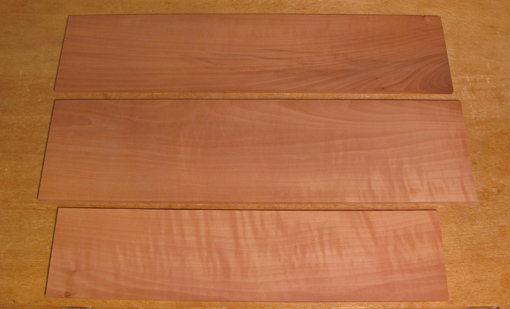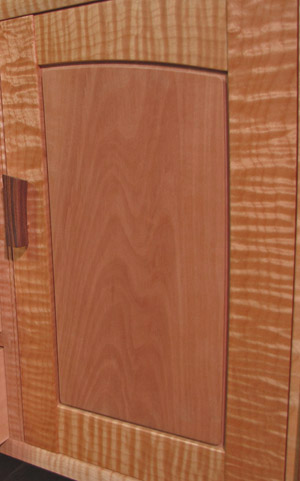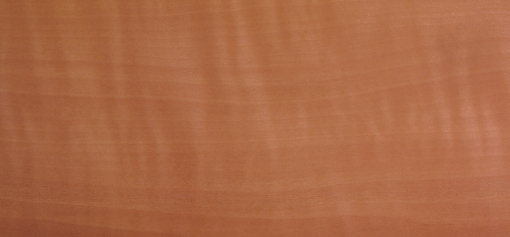First, the bad news. Pearwood (genus Pyrus) is difficult to dry without distortion and the lumber often contains large splits, knots, and other defects. It is expensive and hard to find, especially in large pieces that are not loaded with defects.
But oh, the good news! Pear has a dreamy fine-grained, silky-looking texture with understated but exciting color. The best I can do in words is to call the color a muted pink/salmon, sometimes a pinkish brown. Almost all commercially available pearwood that I have come across has been steamed during processing to enhance the color and reduce stresses in drying.
The domestic pear that I have bought locally has tended to be fairly uniform in color with little or no curl figure, and a density not much greater than cherry or walnut. The top photo below shows a pair of pink-salmon boards from the same tree. Note the subtle shimmer curl in the front board. The lower photo shows a board from another tree which has interesting purplish red streaks.
All of the wood shown in this post is from my shop. It has been surfaced only by the thickness planer with the exception of the door panel in the photo at the end of the post. The photo color is very close to real and close as I can get. Some pieces are portions of boards purchased over 15 years ago. Please keep in mind that I am writing these posts based on my personal experience with the wood, and, since pear is particularly variable, others woodworkers will surely have different experiences. Pear is one of those woods that, if I see some excellent stock in person, I’ll buy it even if I do not have any immediate plans to use it. I know its time will come.

I have a pile of German pear that is much denser, has deeper color, and more streaks and figure than the boards above. I resawed all of it and it took a long time, at least several weeks as I recall, to settle out of its tendency to distort. Three examples from that lot, pictured below, show a range of color, streaks, and curl. Beautiful! Once at peace, all the pear that I have used has been well-behaved and quite stable. I have not been able to find shrinkage data.

Pear is not problematic to saw or glue. Its beautiful fine texture demands a hand-planed finish. The blade must be at peak sharpness with a carefully cambered edge because any blade defect will show up prominently on the wood surface. I needed a bevel-up smoother with a high attack angle for the German pear. Likewise, in cutting joints, pear reveals any and all boo-boos.
Finishing pear is a study in “less-is-more.” Oil or varnish, in my opinion, kills the wood giving it a greasy look. No finish or just some wax would work. To get more protection, I prefer a water-base poly-acrylic which imparts as little change in color as possible and preserves the lively look of the wood.
Enjoy and good luck with pearwood if you decide to use it in your work.





Rob
I am really enjoying your series on woods. You are giving me all kinds of ideas and inspiration. Thank you so much for your dedication. Pear is one that will fit into some of what I have in mind very nicely if I can find it. The door you show in your post is absolutely wonderful.
Thanks, Bill. Beautiful wood is a big motivator for me too.
Rob